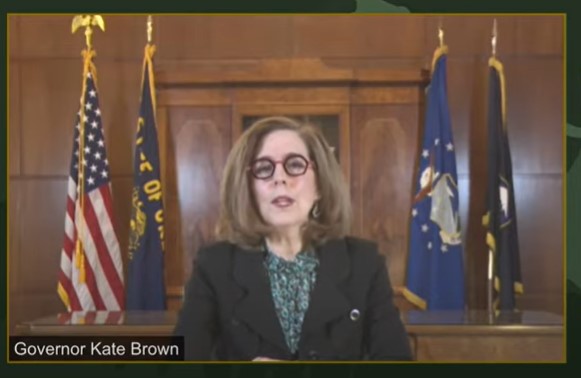(Salem, OR) — Governor Kate Brown today December 21st extended the declaration of a state of emergency as Oregon continues to implement its plan to prepare for and respond to the impending Omicron variant surge in COVID-19 cases and hospitalizations.
“As Oregon prepares for what could be our worst surge in hospitalizations during this pandemic, I know that this is not the beginning of the new year any of us had hoped for,” said Governor Brown. “Time and again over the last two years, Oregonians have proven that we will stand with each other in our most difficult times. Your actions have saved lives, and it is because we have worked together to keep each other safe that Oregon still has some of the lowest infection and mortality rates in the nation. Please, do your part again––get vaccinated, get your booster shot, and wear a mask.”
The emergency declaration continues to be necessary to provide flexibility and resources for the state’s COVID-19 response and recovery efforts, including allowing for the use of SERV-OR volunteer medical providers in hospitals, providing flexibility around professional health licensing, and ensuring Oregon can continue to access all available federal disaster relief funds available, such as enhanced SNAP benefits. Executive Order 21-36 will remain in effect until June 30, 2022, unless earlier rescinded or extended.
Most of the Governor’s executive orders regarding COVID-19 were rescinded on June 30, 2021. In responding to the subsequent Delta surge of COVID-19 cases and hospitalizations, the Governor for the most part did not use her executive authority to issue new emergency orders. She did take other steps, such as activating the Oregon National Guard to help support hospital workers, and coordinating with the Oregon Health Authority to bring skilled healthcare workers to Oregon to support hospital and long-term care facility staff.
Oregon’s safety requirements in place today regarding masks, vaccinations for K-12 educators and staff, and vaccinations for healthcare workers do not rely on the state of emergency declaration––instead, they are covered by agency administrative rules issued under existing state authority.


